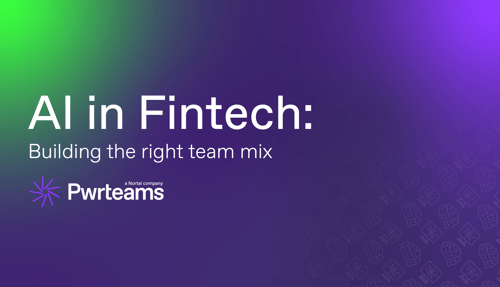3 Tips for Building an Intelligent App Ecosystem

If you have a feeling that everything is trying to get smarter these days, you’re absolutely right. Take applications, for example. In a world where technology advances at breakneck speed, it’s not enough for an app to be just smart – it has to be intelligent. But to launch an intelligent app yourself, you have to combine machine learning, application development and tons of data. Sounds intimidating, doesn’t it? Don’t worry, we’ll try to help you out. Let’s have a closer look at intelligent apps and see what you can do to create a powerful intelligent app ecosystem.
Where Does All That Intelligence Come From?
 Yes, applications are getting smarter, but there’s a limit to what can be programmed with lines of code and strict algorithms. To be worthy of the “intelligent” title, an app should be able to learn from actual data or a particular user. Intelligent apps use machine learning. A lot. You’ve seen them before: Netflix, Google Assistant, chatbots, apps that make pretty accurate predictions about your businesses, preferences, soulmates – they all use machine learning to become the applications of the new generation. Even legacy apps are trying to get more intelligent to be compatible with modern applications, designed to outsmart people. The use of machine learning and the ability to comprehend and analyze data, both real-time and historical, is what will make your app intelligent.
Yes, applications are getting smarter, but there’s a limit to what can be programmed with lines of code and strict algorithms. To be worthy of the “intelligent” title, an app should be able to learn from actual data or a particular user. Intelligent apps use machine learning. A lot. You’ve seen them before: Netflix, Google Assistant, chatbots, apps that make pretty accurate predictions about your businesses, preferences, soulmates – they all use machine learning to become the applications of the new generation. Even legacy apps are trying to get more intelligent to be compatible with modern applications, designed to outsmart people. The use of machine learning and the ability to comprehend and analyze data, both real-time and historical, is what will make your app intelligent.
Why do You Need an Intelligent App Ecosystem?
 Creating the next big app is a hard and risky business, but building platforms to support intelligent apps is a good investment of time and money. And, indeed, we see that Internet giants like Google, Microsoft, Amazon or IBM can already provide entire ecosystems for your future intelligent apps. They have everything you need: from endless cloud computing power and cloud infrastructure to raw data and already trained machine learning models.
Creating the next big app is a hard and risky business, but building platforms to support intelligent apps is a good investment of time and money. And, indeed, we see that Internet giants like Google, Microsoft, Amazon or IBM can already provide entire ecosystems for your future intelligent apps. They have everything you need: from endless cloud computing power and cloud infrastructure to raw data and already trained machine learning models.
On top of that, there are tons for APIs that offer services like speech recognition, NLP (natural language processing), media content manipulation, different kinds of storages, content searching, analytics and more. And don’t forget about the plethora of available frameworks and tools. With all the mobile frameworks (PhoneGap, Ionic, Xamarin, Unity 3D), web frameworks (ASP.NET, MEAN stack, RoR) and machine learning technologies (TensorFlow, Theano, Keras) available, it’s easier than ever to build an excellent software product.
Tip 1: Use Machine Learning Where It’s Needed
 Because it has become a trendy buzzword, it’s easy to believe that trained ML models could do anything. Sometimes, a good-old programmed algorithm will satisfy a user’s needs perfectly fine without a ton of computation. For example, predicting what grocery store to recommend to a user seems like a good application of machine learning. But, maybe, just showing users a list of nearby stores with average prices there will do the trick? Use machine learning where programmed algorithms fall short. And when you do, gather as much data as possible. The more relevant data you have, the better models you’ll train.
Because it has become a trendy buzzword, it’s easy to believe that trained ML models could do anything. Sometimes, a good-old programmed algorithm will satisfy a user’s needs perfectly fine without a ton of computation. For example, predicting what grocery store to recommend to a user seems like a good application of machine learning. But, maybe, just showing users a list of nearby stores with average prices there will do the trick? Use machine learning where programmed algorithms fall short. And when you do, gather as much data as possible. The more relevant data you have, the better models you’ll train.
Tip 2: Iterate
 This approach is one of the principles of the Agile methodology, but it applies really well to machine learning too. There are tons of parameters and algorithms in machine learning and the iterative approach is essential to understand what actually works. Choose the configuration, tune parameters, test the model, make another iteration. And while you’re training models, why not gather more data? Spending a week tinkering a training dataset could improve your model better than a month of coding and parameter tuning. But don’t forget that data is constantly changing, so you have to review and retrain your model on the new, updated data at least once a year.
This approach is one of the principles of the Agile methodology, but it applies really well to machine learning too. There are tons of parameters and algorithms in machine learning and the iterative approach is essential to understand what actually works. Choose the configuration, tune parameters, test the model, make another iteration. And while you’re training models, why not gather more data? Spending a week tinkering a training dataset could improve your model better than a month of coding and parameter tuning. But don’t forget that data is constantly changing, so you have to review and retrain your model on the new, updated data at least once a year.
Tip 3: Build Omnichannel Apps
 Today, we have smartphones, TVs, cars and a bunch of IoT devices connected to the Internet. And even more interfaces are on their way – AR and VR, Amazon Alexa and Google Echo, chatbots and, probably, some kind of a brain-machine interface will pop up soon. So, simply building a desktop website or just a mobile app is not enough to satisfy modern users who check Facebook and make Snapchat videos while watching TV. You have to offer as many interfaces as possible. Even some basic functionality on a smartwatch could make your customer happy. Microservice architecture and RESTful API will help you in achieving that.
Today, we have smartphones, TVs, cars and a bunch of IoT devices connected to the Internet. And even more interfaces are on their way – AR and VR, Amazon Alexa and Google Echo, chatbots and, probably, some kind of a brain-machine interface will pop up soon. So, simply building a desktop website or just a mobile app is not enough to satisfy modern users who check Facebook and make Snapchat videos while watching TV. You have to offer as many interfaces as possible. Even some basic functionality on a smartwatch could make your customer happy. Microservice architecture and RESTful API will help you in achieving that.
There is no turning back. Sooner or later the majority of apps will be intelligent, which will definitely entice new tech startups and boost the revenue of IT giants. A multiplatform intelligent application that use personal and collective data to bring the best experience to their users will be hard to resist. That’s why you need to start acting now, while the competition hasn’t kicked in yet. Go on, hire professional software developers and data scientists and implement that intelligent app idea that’s been sitting in your head. You can thank us later.
READ ALSO
Write your own
success story
with Pwrteams!
Share your details in the form, tell us about your needs, and we'll get back with the next steps.
- Build a stable team with a 95.7% retention rate.
- Boost project agility and scalability with quality intact.
- Forget lock-ins, exit fees, or volume commitments.


